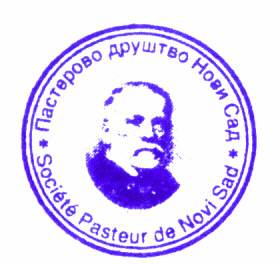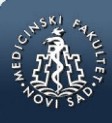md-medicaldata
Main menu:
- Naslovna/Home
- Arhiva/Archive
- Godina 2024, Broj 1
- Godina 2023, Broj 3
- Godina 2023, Broj 1-2
- Godina 2022, Broj 3
- Godina 2022, Broj 1-2
- Godina 2021, Broj 3-4
- Godina 2021, Broj 2
- Godina 2021, Broj 1
- Godina 2020, Broj 4
- Godina 2020, Broj 3
- Godina 2020, Broj 2
- Godina 2020, Broj 1
- Godina 2019, Broj 3
- Godina 2019, Broj 2
- Godina 2019, Broj 1
- Godina 2018, Broj 4
- Godina 2018, Broj 3
- Godina 2018, Broj 2
- Godina 2018, Broj 1
- Godina 2017, Broj 4
- Godina 2017, Broj 3
- Godina 2017, Broj 2
- Godina 2017, Broj 1
- Godina 2016, Broj 4
- Godina 2016, Broj 3
- Godina 2016, Broj 2
- Godina 2016, Broj 1
- Godina 2015, Broj 4
- Godina 2015, Broj 3
- Godina 2015, Broj 2
- Godina 2015, Broj 1
- Godina 2014, Broj 4
- Godina 2014, Broj 3
- Godina 2014, Broj 2
- Godina 2014, Broj 1
- Godina 2013, Broj 4
- Godina 2013, Broj 3
- Godina 2013, Broj 2
- Godina 2013, Broj 1
- Godina 2012, Broj 4
- Godina 2012, Broj 3
- Godina 2012, Broj 2
- Godina 2012, Broj 1
- Godina 2011, Broj 4
- Godina 2011, Broj 3
- Godina 2011, Broj 2
- Godina 2011, Broj 1
- Godina 2010, Broj 4
- Godina 2010, Broj 3
- Godina 2010, Broj 2
- Godina 2010, Broj 1
- Godina 2009, Broj 4
- Godina 2009, Broj 3
- Godina 2009, Broj 2
- Godina 2009, Broj 1
- Supplement
- Galerija/Gallery
- Dešavanja/Events
- Uputstva/Instructions
- Redakcija/Redaction
- Izdavač/Publisher
- Pretplata /Subscriptions
- Saradnja/Cooperation
- Vesti/News
- Kontakt/Contact
 Pasterovo društvo
Pasterovo društvo
- Disclosure of Potential Conflicts of Interest
- WorldMedical Association Declaration of Helsinki Ethical Principles for Medical Research Involving Human Subjects
- Committee on publication Ethics
CIP - Каталогизација у публикацији
Народна библиотека Србије, Београд
61
MD : Medical Data : medicinska revija = medical review / glavni i odgovorni urednik Dušan Lalošević. - Vol. 1, no. 1 (2009)- . - Zemun : Udruženje za kulturu povezivanja Most Art Jugoslavija ; Novi Sad : Pasterovo društvo, 2009- (Beograd : Scripta Internacional). - 30 cm
Dostupno i na: http://www.md-medicaldata.com. - Tri puta godišnje.
ISSN 1821-1585 = MD. Medical Data
COBISS.SR-ID 158558988
PHARMACOKINETIC CONSIDERATIONS IN DRUG DOSING TO PEDIATRIC OBESE PATIENTS
FARMAKOKINETIČKA RAZMATRANJA U DOZIRANJU LEKOVA PEDIJATRIJSKIM GOJAZNIM PACIJENTIMA
Authors
Katarina Vučićević, Branislava Miljković, Milica Prostran
1 Department of Pharmacokinetics and Clinical Pharmacy, Faculty of Pharmacy - University of Belgrade
2 Department of Pharmacology, Clinical Pharmacology and Toxicology, School of Medicine - University of Belgrade
• The paper was received on 12.07.2016./ Accepted on 20.07.2016.
Correspondence to:
assist. prof. Katarina Vučićević, PhD
Department of Pharmacokinetics and Clinical Pharmacy
Faculty of Pharmacy - University of Belgrade
VojvodeStepe 450. 11221 Belgrade, Serbia
phone: +381-11-3951-373
e-mail: kacav@pharmacy.bg.ac.rs
Abstract
Since the incidence of obesity continues to increase globally, this source of disposition variability remains a significant issue for clinicians. The prevalence of overweight and obesechildren has increased worldwide, causing substantial concern over proper therapeutic dosing in this population. Pharmacotherapy in these patients represents a major challenge in the clinical practice, because obese patients are, often excluded from the clinical trials. Consequently, data on drugs’ pharmacokinetics (PK) in this population of patients are scarce, incomplete and/or inconclusive. It is previously observed that different degrees of obesity may change the PK profile of drug. Consequently, there is a need for the descriptors of size of the organism that best describes the changes in the composition of the organism in obese patients, and the one that best predicts key PK parameters that define dosage regimen. Changes in PK parameters of certain drugs are clinically important in the obese children and adolescent patients, requiring changes inusual dosage regimen.
Key words
variability, children, body mass index
References
- World Health Organization (WHO). Childhood overweight and obesity.Available from: http://www.who.int/dietphysicalactivity/childhood/en/. Accessed: May 2016.
- Center for Disease Control and Prevention. Obesity prevention. Available from: http://www.cdc.gov/healthyyouth/obesity/facts.htm . Accessed: May 2016.
- Choudhary AK, Donnelly LF, Racadio JM, Strife JL. Diseases associated with childhood obesity. AJR. 2007;188(4):1118-30.
- Nenadov N, Svorcan JZ, Radovanov M, Rastislava Krasnik R, Striković V, Žigić OG. Relation between obesity level and the risk of comorbidity based on body weight, physical activity and positive family history. MD-Medical Data. 2013;5(4):347-51.
- Bartelink IH, Rademaker CM, Schobben AF, van den Anker JN. Guidelines on paediatric dosing on the basis of developmental physiology and pharmacokinetic considerations. Clin Pharmacokinet. 2006;45(11):1077-97.
- Kendrick JG, Carr RR, Ensom MHH. Pharmacokinetics and drug dosing in obese children. J Pediatr Pharmacol Ther. 2010;15(2):94-109.
- Harskamp-van Ginkel MW, Hill KD, Becker KC, Testoni D, Cohen-Wolkowiez M, Gonzalez D, et al. Drug dosing and pharmacokinetics in children with obesity: asystematic review. JAMA Pediatrics. 2015;169(7):678-85.
- Han PY, Duffull SB, Kirkpatrick CM, Green B. Dosing in obesity: a simple solution to a big problem. Clin Pharmacol Ther. 2007;82(5):505-8.
- Hanley MJ, Abernethy DR, Greenblatt DJ. Effect of obesity on the pharmacokinetics of drugs in humans. Clin Pharmacokinet. 2010;49(2):71-87.
- Cheymol G. Effects of obesity on pharmacokinetics implications for drug therapy. Clin Pharmacokinet. 2000;39(3):215-31.
- Sampson M, Cohen-Wolkowiez M, Benjamin D, Jr., Capparelli E, Watt K. Pharmacokinetics of antimicrobials in obese children. GaBI J. 2013;2(2):76-81.
- Kendrick JG, Carr RR, Ensom MH. Pediatric obesity: pharmacokinetics and implications for drug dosing. Clin Ther. 2015;37(9):1897-923.
- Wells JC, Fewtrell MS, Williams JE, Haroun D, Lawson MS, Cole TJ. Body composition in normal weight, overweight and obese children: matched case-control analyses of total and regional tissue masses, and body composition trends in relation to relative weight. Int J Obes (Lond). 2006;30(10):1506-13.
- Bouillon T, Shafer SL. Does size matter? Anesthesiology. 1998;89(3):557-60.
- Vučićević K, Miljković B. Pharmacokinetic aspects in dosing regimen in paediatrics. Arh farm. 2012;62(4):306-21.
- Green B, Duffull SB. What is the best size descriptor to use for pharmacokinetic studies in the obese? Br J Clin Pharmacol. 2004;58(2):119-33.
- Vučićević K, Miljković B. Obesity as a factor of pharmacokinetic variability. Arh farm. 2011;61(4):365-82.
- Anderson BJ, Holford NH. Tips and traps analyzing pediatric PK data. Paediatr Anaesth. 2011;21(3):222-37.
- Duffull SB, Dooley MJ, Green B, Poole SG, Kirkpatrick CM. A standard weight descriptor for dose adjustment in the obese patient. Clin Pharmacokinet. 2004;43(15):1167-78.
- Battistini N, Virgili F, Severi S, Brambilla P, Manzoni P, Beccaria L, et al. Relative expansion of extracellular water in obese vs. normal children. J Appl Physiol. 1995;79(1):94-6.
- Sharkey I, Boddy AV, Wallace H, Mycroft J, Hollis R, Picton S. Body surface area estimation in children using weight alone: application in paediatric oncology. Br J Cancer. 2001;85(1):23-8.
- Griggs JJ, Mangu PB, Anderson H, Balaban EP, Dignam JJ, Hryniuk WM, et al. Appropriate chemotherapy dosing for obese adult patients with cancer: American Society of Clinical Oncology Clinical Practice Guideline. J Clin Oncol 2012;30(13):1553-61.
- Portugal RD. Obesity and dose individualization in cancer chemotherapy: the role of body surface area and body mass index. Med Hypotheses. 2005;65(4):748-51.
- Hijiya N, Panetta JC, Zhou Y, Kyzer EP, Howard SC, Jeha S, et al. Body mass index does not influence pharmacokinetics or outcome of treatment in children with acute lymphoblastic leukemia. Blood. 2006;108(13):3997-4002.
- Roubenoff R, Kehayias JJ. The meaning and measurement of lean body mass. Nutr Rev. 1991;49(6):163-75.
- Peters AM, Snelling HL, Glass DM, Bird NJ. Estimation of lean body mass in children. Br J Anaesth. 2011;106(5):719-23.
- Mortensen A, Lenz K, Abildstrom H, Lauritsen TL. Anesthetizing the obese child. Paediatr Anaesth. 2011;21(6):623-9.
- Wurtz R, Itokazu G, Rodvold K. Antimicrobial dosing in obese patients. Clin Infect Dis. 1997;25(1):112-8.
- Bauer L. Applied clinical pharmacokinetics. 2nd ed. New York: McGraw-Hill; 2008. p. 548-99.
- Rogers PC, Meacham LR, Oeffinger KC, Henry DW, Lange BJ. Obesity in pediatric oncology. Pediatr Blood Cancer. 2005;45(7):881-91.
- Polso AK, Lassiter JL, Nagel JL. Impact of hospital guideline for weight-based antimicrobial dosing in morbidly obese adults and comprehensive literature review. J Clin Pharm Ther. 2014;39(6):584-608.
- Leykin Y, Miotto L, Pellis T. Pharmacokinetic considerations in the obese. Best Pract Res Clin Anaesthesiol. 2011;25(1):27-36.
- Lee JB, Winstead PS, Cook AM. Pharmacokinetic alterations in obesity. Orthopedics. 2006;29(11):984-8.
- Rose JB, Theroux MC, Katz MS. The potency of succinylcholine in obese adolescents. Anesth Analg. 2000;90(3):576-8.
- Brown TC, Meretoja OA, Bell B, Clare D. Suxamethonium-electromyographic studies in children. Anaesth Intensive Care. 1990;18(4):473-6.
- Koshida R, Nakashima E, Taniguchi N, Tsuji A, Benet LZ, Ichimura F. Prediction of the distribution volumes of cefazolin and tobramycin in obese children based on physiological pharmacokinetic concepts. Pharm Res. 1989;6(6):486-91.
- Choi JJ, Moffett BS, McDade EJ, Palazzi DL. Altered gentamicin serum concentrations in obese pediatric patients. Pediatr Infect Dis J. 2011;30(4):347-9.
- Rusić B, Denić K, Đorđević S. The importance of enzyme cytochrome P450 in drug metabolism. MD-Medical Data. 2014;6(1):95-8.
- Chiney MS, Schwarzenberg SJ, Johnson LA. Altered xanthine oxidase and N-acetyltransferase activity in obese children. Br J Clin Pharmacol. 2011;72(1):109-15.
- Schwartz GJ, Work DF. Measurement and estimation of GFR in children and adolescents. Clin J Am Soc Nephrol. 2009;4(11):1832-43.
- Pai MP. Estimating the glomerular filtration rate in obese adult patients for drug dosing. Adv Chronic Kidney Dis. 2010;17(5):e53-62.
- Wuerzner G, Bochud M, Giusti V, Burnier M. Measurement of glomerular filtration rate in obese patients: pitfalls and potential consequences on drug therapy. Obes Facts. 2011;4(3):238-43.
- Cindik N, Baskin E, Agras PI, Kinik ST, Turan M, Saatci U. Effect of obesity on inflammatory markers and renal functions. Acta Paediatr. 2005;94(12):1732-7.
UDK: 615.015-053.2
613.25-053.2
COBISS.SR-ID 226160396
 Medicinski fakultet
Medicinski fakultet